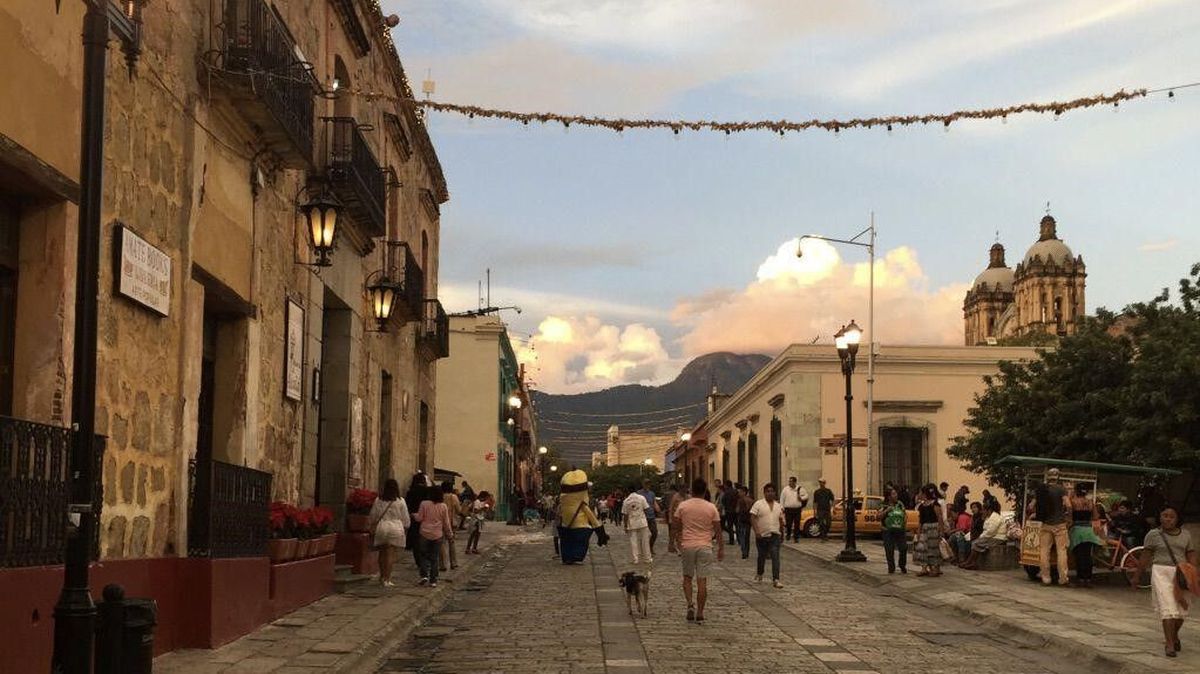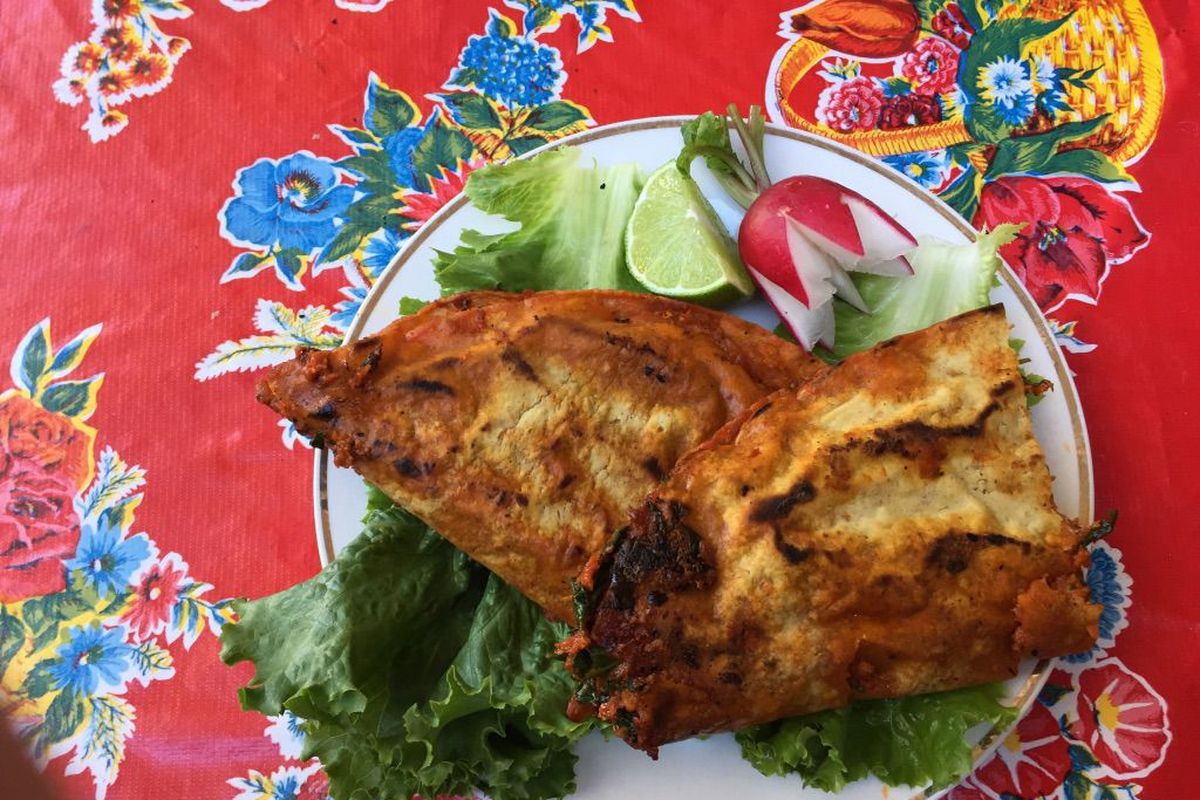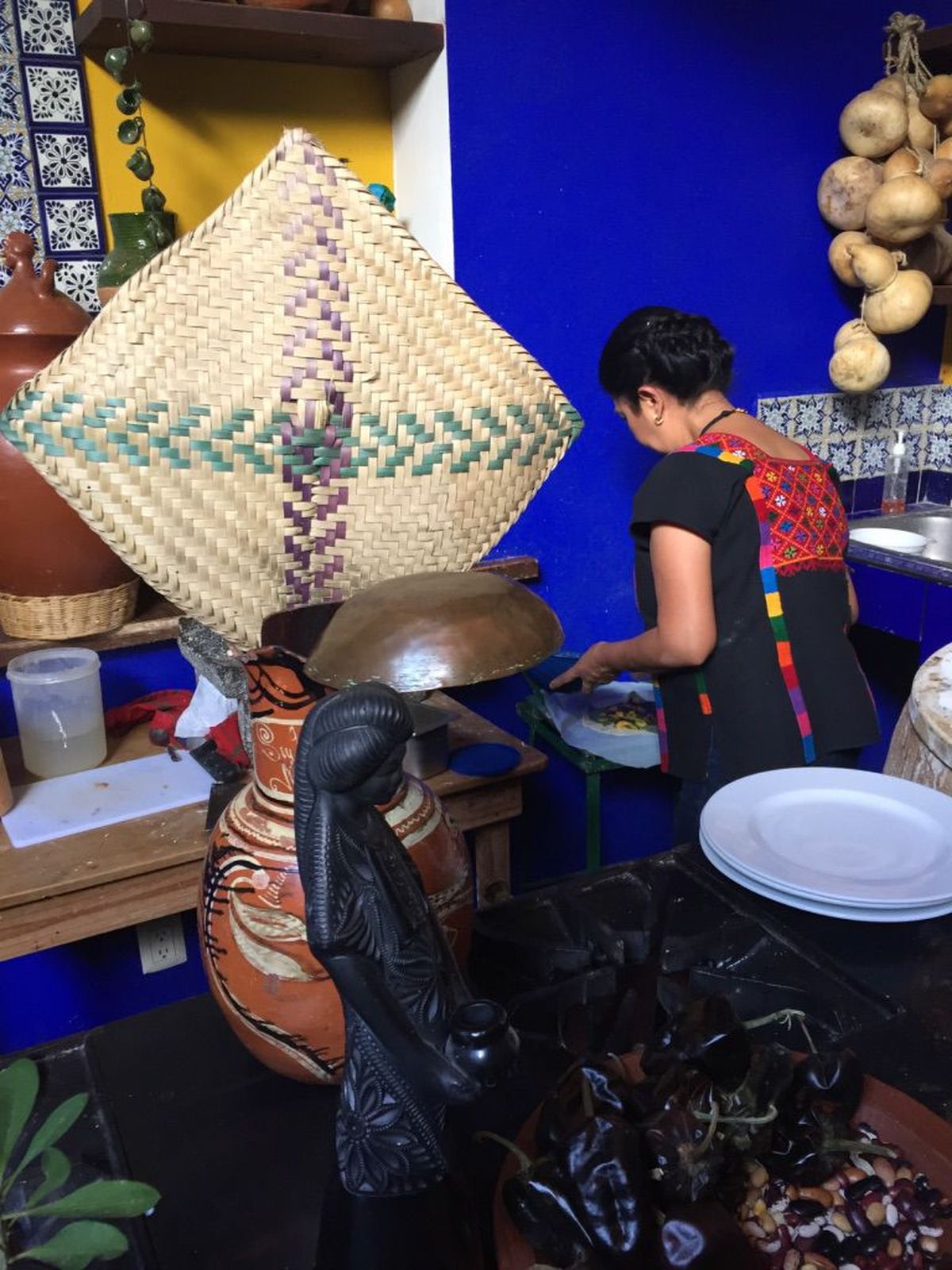Tourism will be key to recovery for Oaxaca post-coronavirus
San Antonino’s empanada de amarillo recipe is distinct from elsewhere in the state. (Cody Copeland/For The Spokesman-Review)Buy a print of this photo
Quarantine has been difficult on the chronically restless among us, especially those who have turned an inability to sit still into a profession such as travel writers like yours truly. The pandemic dashed my hopes of going to the southern Mexican state of Oaxaca in May, to the place that I spent the past two years writing, to celebrate the long-awaited publication of my “Moon Handbook” travel guide.
I dreamed of hot chocolate steaming out of hand-painted clay mugs in the cool desert morning and gigantic tamales that spill rich, dark mole when you stab a fork into them. As usual, I planned on ignoring any health qualms about eating asiento, the lard made from frying pigskin that is integral to the flavors of Oaxacan staples like tlayudas and memelas.
But in light of the struggle of Oaxacans who rely on tourism and busy streets to earn a living, my few months of staying put and working from home don’t seem so bad. I’ve been able to maximize my isolation without it affecting my online freelance work.
I survive off ludicrous amounts of Uber Eats because there are few things more depressing than cooking for one. I work hard, I promise, but I’m also aware that my privileged position does allow for a bit more yoga, sci-fi novels and French lessons on Duolingo than a street vendor’s does.
So, although many of us already do, now is the perfect time to reflect on or reconsider the effects our travel choices have on the people who make those experiences so memorable and worth trekking across the globe.
I think of Eric Ramirez, founder of Zapotrek, a responsible tourism company that offers trips meant to foster cross-cultural connections, along with a healthy dose of adventure. Ramirez’s tour model is thankfully replacing the previous generation’s, which tended to be little more than whirlwind shopping sprees and sightseeing checklists before filling up the day-trippers with enough commercially produced mezcal to convince them to buy more.
Ramirez will get you drunk if it’s what you want, but he’ll make you work for it. His tours to small, family-owned agave farms/mezcal distilleries called palenques are done on foot or bicycle. They stop at tiny roadside breakfast shacks where spectacular mountain vistas peek through the thin gaps between the wooden beams.
Homegrown chefs serve up generational recipes: eggs fried on the ceramic griddle called a comal, fresh black beans flavored with the piquant leaves of the epazote plant, handmade tortillas and spicy salsa made with red-hot chile de arbol. Everyone is well-paid for their services.
I think of Celia Florian, owner and head chef at Las Quince Letras (the 15 Letters), whose empanadas made with my favorite version of the savory salsa called amarillo (“yellow,” despite the sauce’s perennially red-orange hue) were just one of a series of dishes that literally brought tears to my eyes. I felt like a man in love, like I should call my mom and tell her about it.
I think of Jose García, the blind potter from San Antonino Castillo Velasco (where those empanadas originate), who still shapes clay despite losing his sight to glaucoma nearly two decades ago.
His contagious optimism always puts my annoying grumpiness into perspective and can be seen in the unique styles of his children and grandchildren, to whom he and his wife, Teresa, have passed on the tradition.
I think of Max Cruz, the blind accordionist who fills Oaxaca City’s picturesque Macedonio Alcala pedestrian street with eerie Russian waltzes or the hometown favorite: Oaxaca’s de facto anthem “Dios Nunca Muere (God Never Dies),” a Mexican waltz composed by the street’s revered namesake.
Without the markets and streets teeming with tourists and enterprising hawkers of everything from kitchen hardware and fried grasshoppers to those colorful ceramic skulls we all love so much, these members of Mexico’s tourism sector and informal economy are struggling. Some vendors have resorted to bartering directly for food during the pandemic.
So, I invite those of us itching to take to the skies again, especially those who have had a relatively easy go of it during the quarantine, to consider how our first trips in the new normal will affect those who didn’t. Oaxaca is the perfect destination to maximize both experience and impact.
Another responsible tour option is the nonprofit organization Fundacion En Via, which takes visitors into local communities to meet the businesswomen it supports with microloans and other economic assistance.
The Pueblos Mancomunados, a group of seven indigenous villages in the Sierra Norte mountains an hour and a half northeast of the capital, has collaborated to offer multiple ecotourism and cultural activities that benefit both the land and the Zapotec people living on it.
Even the state’s luxury coastal destination, Huatulco, is a shining example of luxury tourism done responsibly. The nine bays that are now part of the planned tourist destination Bahías de Huatulco were inhabited by people when the federal government decided to create Cancún on the Oaxacan coast in the 1980s.
The displaced residents were given grants to buy homes and start businesses in the newly formed town of La Crucecita, just a 20-minute walk from the beach and now a vibrant tourist hot spot in itself.
It’s now full of delicious restaurants and lots of great shopping, especially for silverwork, embroidery, mezcal and other classic Oaxacan products.
Tourism is going to be key to Oaxaca’s economic recovery after COVID-19. Nearly 70% of the state’s economic activity is tied up in the tourism and hospitality sectors, giving it priority, in my opinion, over places with other established industries that can foster growth upon returning to normal.
And on that note, I think of the Manzano family of Nochixtlan, who make the best tlayuda in the state that I’ve found (so far), and all the others who told me they had just started businesses and were looking forward to bright futures. I sincerely hope to be able to support them again soon.
Cody Copeland’s latest edition of “Moon Oaxaca” was published in May. Copeland has lived and worked in Mexico for more than six years.








